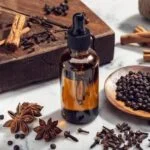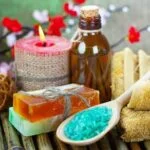What is Thai aromatherapy massage? Thai aromatherapy massage is a traditional healing technique that combines the benefits of therapeutic Thai massage and the use of essential oils to promote relaxation and overall well-being. This ancient practice has been used for centuries to relieve tension, improve circulation, and enhance mental clarity.
Originating in Thailand, Thai aromatherapy massage is deeply rooted in the ancient healing traditions of the country. The combination of gentle pressure, stretching techniques, and the application of essential oils creates a unique and holistic approach to wellness. The use of specific aromatic oils adds an extra dimension to the therapeutic benefits of traditional Thai massage.
In this article, we will explore the history, benefits, techniques, and differences between traditional Thai massage and Thai aromatherapy massage. We will also discuss what to expect during a session and provide tips for choosing the right aromatherapy spa for your needs.
Whether you are new to the world of aromatherapy or looking to enhance your understanding of its applications within a traditional Thai context, this article aims to provide insight into the healing and relaxing powers of Thai aromatherapy massage.
The History of Thai Aromatherapy Massage
Origins in Traditional Thai Medicine
Thai aromatherapy massage has a long and rich history that can be traced back to ancient Thailand. It is rooted in the principles of traditional Thai medicine, which emphasizes the balance of mind, body, and spirit.
Thai healers have long used herbs and essential oils to treat various ailments and promote overall well-being. The practice of using aromatic oils in massage therapy has been passed down through generations, resulting in the development of the unique form of Thai aromatherapy massage that exists today.
Influence of Ayurvedic Medicine
The history of Thai aromatherapy massage is also influenced by Ayurvedic medicine from India, which has a centuries-old tradition of using natural essential oils for healing and relaxation. When Buddhism spread to Thailand, it brought with it the teachings of Ayurveda, which eventually integrated with traditional Thai medicine. This fusion gave rise to the use of aromatic herbs and oils in Thai therapeutic treatments, including massage.
Modern Development
In more recent times, the practice of Thai aromatherapy massage has evolved to incorporate a wide range of essential oils with different properties and benefits. Modern spas and wellness centers offer a variety of aromatherapy blends tailored to address specific health concerns and promote emotional balance. While still rooted in tradition, contemporary Thai aromatherapy massage continues to adapt to meet the needs and preferences of today’s clients.
Understanding Aromatherapy Oils Used in Thai Massage
Thai aromatherapy massage uses a variety of essential oils that are carefully selected for their therapeutic benefits. These oils are used in combination with traditional Thai massage techniques to enhance the overall experience and promote relaxation and healing. Some of the most commonly used aromatherapy oils in Thai massage include:
1. **Lemongrass Oil:** Known for its refreshing and invigorating scent, lemongrass oil is often used in Thai aromatherapy massage to uplift the mood and relieve stress. It also has antibacterial and anti-inflammatory properties, making it beneficial for the skin.
2. **Lavender Oil:** Widely recognized for its calming and soothing properties, lavender oil is a popular choice in aromatherapy massage. It can help reduce anxiety, improve sleep, and alleviate muscle tension, making it an excellent addition to Thai massage sessions.
3. **Peppermint Oil:** With its cooling and refreshing effect, peppermint oil is used in Thai aromatherapy massage to relieve muscle pain and headaches. It also has anti-nausea properties and can aid in digestion, providing additional health benefits during the massage.
In addition to these oils, other popular choices for Thai aromatherapy massage include jasmine, rosemary, and eucalyptus oil. Each of these essential oils brings its own unique set of benefits to the massage experience, contributing to a holistic approach to healing and relaxation in traditional Thai medicine.
| Aromatherapy Oils | Benefits |
|---|---|
| Lemongrass Oil | Uplifts mood, relieves stress, antibacterial properties |
| Lavender Oil | Calms and soothes, reduces anxiety, improves sleep |
| Peppermint Oil | Relieves muscle pain and headaches, aids digestion |
Benefits of Thai Aromatherapy Massage
Thai Aromatherapy Massage offers a wide range of benefits for the mind, body, and spirit. This ancient healing practice combines the therapeutic effects of touch with the use of essential oils to create a deeply relaxing and rejuvenating experience. The combination of traditional Thai massage techniques and the aromatic properties of essential oils work together to enhance the overall wellness of an individual.
One major benefit of Thai Aromatherapy Massage is its ability to reduce stress and anxiety. The soothing touch and calming scents of the essential oils help promote relaxation, easing tension in both the muscles and the mind. These effects can also lead to improved sleep quality and mental clarity. Additionally, some essential oils used in Thai Aromatherapy Massage have been found to have mood-boosting properties, helping to alleviate feelings of depression or sadness.
Another advantage of Thai Aromatherapy Massage is its ability to relieve physical discomforts such as muscle pain and inflammation. Essential oils like lavender, peppermint, and eucalyptus are commonly used in this type of massage for their analgesic and anti-inflammatory properties.
When combined with massage techniques like stretching and acupressure, these oils can help reduce muscle tension, improve circulation, and alleviate pain from conditions such as arthritis or sports injuries. Overall, Thai Aromatherapy Massage is not only a luxurious self-care treatment but also a powerful therapeutic tool for overall health and wellness.
| Benefit | Description |
|---|---|
| Stress Reduction | The combination of touch therapy and aromatherapy helps promote relaxation, ease tension in both muscles and mind. |
| Pain Relief | Essential oils used in Thai Aromatherapy Massage have analgesic and anti-inflammatory properties that can alleviate muscle pain and reduce inflammation. |
The Techniques Used in Thai Aromatherapy Massage
Thai Aromatherapy Massage is a unique therapeutic practice that combines the benefits of traditional Thai massage with the use of aromatherapy oils. This combination creates a deeply relaxing and healing experience for both the body and the mind. The techniques used in Thai Aromatherapy Massage are designed to promote a sense of well-being, reduce stress, and relieve muscle tension.
In a Thai Aromatherapy Massage session, various techniques are employed to achieve the desired therapeutic effects. Some of these techniques include:
- Pressure Point Stimulation: During the massage, pressure is applied to specific points on the body to release tension and promote relaxation.
- Stretching: Similar to traditional Thai massage, stretching plays a significant role in Thai Aromatherapy Massage. The therapist will gently stretch the client’s body to improve flexibility and release muscle tension.
- Aromatherapy Oil Application: High-quality essential oils are used during the massage to enhance its therapeutic effects. The therapist may apply the oils directly to the skin or use an oil diffuser to fill the room with soothing aromas.
These techniques work together to create a multi-sensory experience that stimulates both the body and the mind. The combination of touch, scent, and gentle movement helps clients achieve a profound state of relaxation and rejuvenation during a Thai Aromatherapy Massage session. It’s important to seek out a qualified and experienced therapist who can skillfully apply these techniques for maximum benefit.
Differences Between Traditional Thai Massage and Thai Aromatherapy Massage
Thai Aromatherapy Massage is a unique and traditional practice that combines the benefits of aromatherapy with the techniques of Thai massage. Unlike traditional Thai massage, which focuses on stretching and deep tissue manipulation, Thai Aromatherapy Massage incorporates the use of essential oils to enhance the overall experience. Here are some key differences between these two types of massages:
1. Techniques: Traditional Thai massage involves a series of deep compressions, joint mobilization, and acupressure techniques to release tension and promote relaxation. On the other hand, Thai Aromatherapy Massage incorporates gentle strokes and effleurage movements along with the application of essential oils to stimulate the senses and induce relaxation.
2. Aromatherapy Oils: In traditional Thai massage, no essential oils are used during the session. However, in Thai Aromatherapy Massage, carefully selected essential oils are applied to the skin or inhaled to promote various therapeutic effects such as relaxation, stress reduction, or even relief from certain ailments.
3. Emotional and Mental Benefits: While both types of massages offer physical benefits such as improved circulation and pain relief, Thai Aromatherapy Massage is known for its additional emotional and mental benefits due to the use of aromatherapy oils. The aroma stimulates the limbic system in the brain, promoting a sense of well-being and relaxation.
Overall, while both traditional Thai massage and Thai Aromatherapy Massage offer incredible benefits, it’s important to choose the right type of massage based on your preferences and needs. Whether you prefer a more intense physical manipulation or a gentler approach with added emotional benefits from aromatherapy oils, both options provide holistic wellness benefits for mind, body, and soul.
What to Expect During a Thai Aromatherapy Massage Session
When you book a Thai Aromatherapy Massage session, you can expect to be greeted by a calming and soothing environment. The massage therapist will typically ask about any specific areas of concern or any health issues that need to be addressed before the session begins. This is the perfect time to communicate your preferences for the type of essential oils you would like used during the massage.
Choose Your Aromatherapy Oils
One of the key elements of a Thai Aromatherapy Massage is the use of essential oils. You will likely be presented with a selection of aromatic oils to choose from, each with its own unique therapeutic benefits. Some popular choices include lavender for relaxation, peppermint for invigoration, and eucalyptus for respiratory relief. Once you have made your selection, the therapist will blend it with a carrier oil and begin the massage.
The Massage Techniques
During the massage, you can expect gentle pressure combined with long, flowing strokes to help deeply relax and soothe your body. The therapist will use traditional Thai massage techniques along with the application of aromatherapy oils to enhance relaxation and promote wellbeing. The aroma of the essential oils combined with the therapeutic touch creates a truly rejuvenating experience.
Overall, a Thai Aromatherapy Massage session provides an opportunity to escape from everyday stresses and experience deep relaxation while also benefiting from the healing properties of aromatherapy. It is important to speak up if at any point during the session you feel uncomfortable or if you would like adjustments made in terms of pressure or technique.
Tips for Choosing the Right Aromatherapy Massage Spa
When it comes to choosing the right aromatherapy massage spa, there are a few key considerations to keep in mind. First and foremost, it’s important to do your research. Look for spas that specialize in Thai aromatherapy massage and have trained and experienced therapists. Reading reviews and getting recommendations from friends or family members can also help you narrow down your choices.
Once you have a few potential spas in mind, consider visiting them in person before making a decision. This will give you the opportunity to check out the facilities and get a feel for the atmosphere. Pay attention to cleanliness, ambiance, and the overall professionalism of the staff.
Another important factor to consider when choosing an aromatherapy massage spa is the quality of the essential oils they use. A reputable spa will only use high-quality, pure essential oils that are safe for topical application. They should also be knowledgeable about the different properties of each oil and how they can benefit your overall well-being.
Finally, don’t forget to consider the overall experience offered by each spa. From the moment you walk in the door to the moment you leave, you should feel welcomed, comfortable, and relaxed. Choose a spa that offers excellent customer service and goes above and beyond to ensure your satisfaction. After all, the right atmosphere can greatly enhance the healing and relaxing powers of a Thai aromatherapy massage session.
Conclusion
In conclusion, Thai Aromatherapy Massage is a holistic and therapeutic practice that has been deeply rooted in the history and culture of Thailand. The use of essential oils in combination with traditional Thai massage techniques provides a unique healing experience for both the body and mind. The benefits of Thai Aromatherapy Massage are extensive, ranging from physical relaxation and pain relief to emotional balance and mental clarity.
The ancient practice of Thai Aromatherapy Massage continues to gain popularity around the world as people seek natural and holistic approaches to health and wellness. The blend of aromatherapy oils used in this type of massage not only enhances the overall massage experience but also contributes to the healing properties of the treatment. With the right combination of essential oils, a Thai Aromatherapy Massage can help alleviate stress, improve circulation, boost energy levels, and promote a sense of well-being.
In choosing a spa for a Thai Aromatherapy Massage, it is important to consider the qualifications and experience of the therapists, as well as the quality of essential oils used. By selecting a reputable spa that specializes in this type of massage, individuals can ensure that they receive an authentic and effective treatment. Ultimately, Thai Aromatherapy Massage offers a powerful combination of ancient wisdom and modern wellness practices that can leave individuals feeling rejuvenated, balanced, and refreshed.
Frequently Asked Questions
What Is the Difference Between a Normal Massage and an Aromatherapy Massage?
A normal massage typically involves using various techniques to manipulate the soft tissues of the body, promoting relaxation and relieving muscle tension. On the other hand, an aromatherapy massage incorporates the use of essential oils to enhance the therapeutic effects of the massage.
These essential oils are selected based on their specific properties and are typically diluted before being applied to the skin during the massage.
What Happens in Aromatherapy Massage?
In an aromatherapy massage, essential oils are carefully selected and combined to create a customized blend based on the client’s needs or preferences. During the massage, these essential oils are then applied to the skin through gentle massaging techniques or through inhalation.
The aroma of the essential oils can have various effects on the mind and body, such as promoting relaxation, reducing stress, uplifting mood, or providing relief from certain ailments.
What Is the Difference Between a Thai Massage and a Normal Massage?
The main difference between a Thai massage and a normal massage lies in their techniques and principles.
While a normal massage primarily focuses on manipulating soft tissues with kneading, rubbing, and pressing movements, Thai massage incorporates stretching and pressure point stimulation along energy lines known as “sen.” Additionally, Thai massage is typically performed with the client fully clothed and without any use of oil, while a normal massage often involves direct contact with bare skin using oil or lotion for smoother movements.

Are you looking for a natural way to improve your health and wellbeing?
If so, aromatherapy may be the answer for you.






